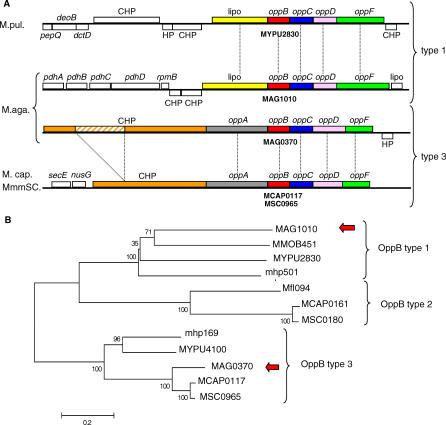Figure 3. Genomic Organization and Phylogenetic Relationship of the Genes Encoding the Oligopeptide Transporter in Mycoplasmas.
(A) Comparison of the genomic organization of the opp loci in M. agalactiae, M. pulmonis, M. capricolum subsp. capricolum, and M. mycoides subsp. mycoides SC. Genes are represented by boxes positioned above or below the main line according to their relative orientation on the genome. Homologous genes are indicated by identical color; closest orthologs are connected by dashed lines. A 1,357-aa insertion in the orange-colored CHP of M. agalactiae is represented by a hatched box.
CHP, conserved hypothetical protein; lipo, predicted lipoprotein; M.aga., M. agalactiae; M. cap., M. capricolum subsp. capricolum; MmmSC, M. mycoides subsp. mycoides SC; and M.pul., M. pulmonis.
(B) Phylogenetic tree inferred from the amino acid sequence of OppB proteins. Bootstrap support percentages (based on 500 replicates) are indicated near each node of the tree. The two copies present in M. agalactiae are indicated by red arrows. Sequences are designated according to their mnemonic followed by their identification number as indicated in public databases. MAG, M. agalactiae; MCAP, M. capricolum subsp. capricolum; Mfl, Me. florum; mhp, M. hyopneumoniae; MMOB, M. mobile; MSC, M. mycoides subsp. mycoides SC; and MYPU, M. pulmonis.

